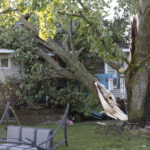“It’s like a Kardashian episode.”
That outburst from an unidentified person spoke to the fact that private companies can make their affairs very public in bitter courtroom battles over management liability.
The comment came during a panel discussion entitled “Is There Anything Private About Private Companies Any More?” at the at the 2017 Management and Professional Liability Symposium of the Professional Liability Underwriting Society (PLUS), held in early April in Chicago.
“Some of the worst [management liability] claims we see are in family-owned companies,” said panelist Laura Zaroski, executive vice president of Socius Insurance Services. “When a company grows and gets big and takes an action that disappoints [long time participants], they get angry. After all, they’ve been there from the start.”
Yet, claims by one family member against another are generally excluded in management liability policies, she noted.
There’s a well-known three-generation pattern for family-run private companies, said David Vanalek, claims director for U.S. professional liability for Markel: “The first generation builds it, the second generation runs it, the third generation ruins it.”
Why Suits Happen
Given that pattern, there are three principal reasons for management liability suits against officers and directors of private companies, Vanalek said: failure to pay satisfactory dividends, denial of rights to minority shareholders, and excessive executive compensation.
According to Vanalek, disputes can usually be resolved as long as claimants and defendants are profit-oriented. That’s not always the case with private, non-profit organizations.
“Private, for-profit companies focus on profit and seek a resolution to cut losses,” he said. “On the non-profit side, folks stand on principle and tend to litigate more frequently.”
Not-for-profit charitable organizations also find themselves under growing regulatory scrutiny.
When it comes to director and officer (D&O) liability, “the line between for-profit and non-profit is becoming so blurred as to make them indistinguishable,” said Eric Berman, a partner in the law firm Venable LLP who represents numerous non-profit organizations.
According to Berman, state attorneys general have become more aggressive in how they investigate fundraising and spending by non-profits. Being a well-meaning volunteer board member doesn’t protect someone from the threat of penalties and loss of personal assets.
“”If [directors] stick their heads in the sand, that can be held to be willful and wanton conduct,” subject to liability and sanction, he said.
Things will only get worse if management abuses draw the attention of the federal government.
“If the Federal Trade Commission is investigating your charity, you’re really in trouble,” Berman said. “That’s because the federal government has already determined you’re not operating according to your charter, but as a for-profit.”
Fortunately for both private companies and non-profits, management liability insurance, backed by risk management consulting resources, is available at very favorable rates in a persistently soft market.
“I’m surprised when I see what the pricing is, and it’s really good coverage,” Zaroski said.
Topics Profit Loss
Was this article valuable?
Here are more articles you may enjoy.



 California Again Delays Wildfire Protection Rules for Homes
California Again Delays Wildfire Protection Rules for Homes  Hartford: 10-Year Analysis Shows Shifts in Common, Expensive Small-Business Claims
Hartford: 10-Year Analysis Shows Shifts in Common, Expensive Small-Business Claims  US E&S Outlook No Longer Positive: AM Best
US E&S Outlook No Longer Positive: AM Best  One of Highest Property Claims Severity Recorded in Q3 on Low Volume, Says Verisk
One of Highest Property Claims Severity Recorded in Q3 on Low Volume, Says Verisk 

